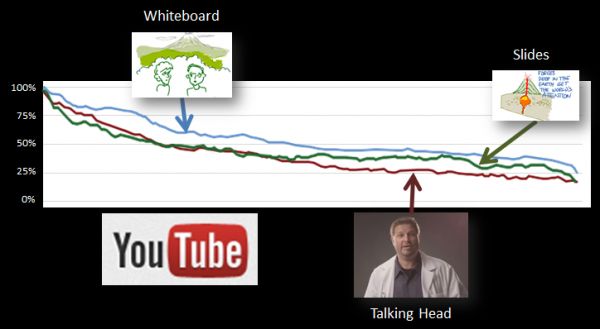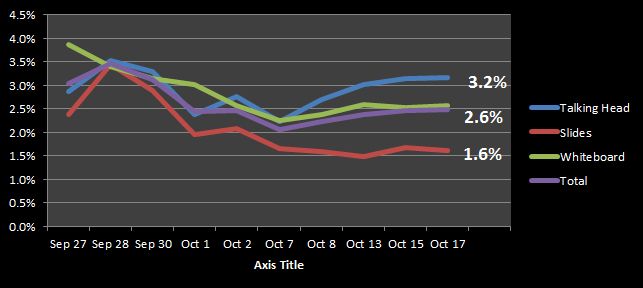By avoiding our online marketing confirmation bias or Oedipus Complex we lay the path to greater insights and greater profitability.
This is a guest post by Craig Andrews.
Sorry, no salacious stories about sons killing their father and sleeping with their mother. But in Oedipus Rex, Sophocles had insights about Online Marketing more than 2 millennia before the internet. The play’s hero had a tragic flaw that plagues all of us. It is our Confirmation Bias or Oedipus Complex.
“My poor children, I know why you have come— I am not ignorant of what you yearn for.” – Oedipus Rex, Sophocles
The Greek tragedy opens with Oedipus, the King, telling the people he knows the source of their pain. It turns out that he is the source of their pain.
At some point, we all approach our internet visitors the same way Oedipus approached the Thebans. We are absolutely convinced we know why our website visitors have come and what they yearn for. But if we don’t continually test and challenge our assumptions, we are just as guilty as Oedipus.
The Origin of Our Complex (our Confirmation Bias)
We are passionate about our business and our customers. We invest time in serving and understanding our customers. When this makes us over confident, we can miss important insights. Even in looking at our website analytics, we can find data that confirms what we believed. This “confirmation bias” can cause us to quit scouring data when we find the data that supports our hypothesis. We must press further.
As an example, a client was convinced their customers wouldn’t visit the website using mobile phones. Yet 5 months after launching a new site, 1/3rd of their website conversions were from mobile phones. In another instance, we saw sustained double-digit organic traffic growth and assumed it was due to Google.
Turns out Google traffic was dropping while traffic from other search engines was rising. Haunted by the words of Oedipus – “I know why you have come” – I was wrong. Continuing with the wrong assumption without correction would have resulted in additional lost traffic from the world’s largest search engine.
No Fate But What We Make
Oedipus thought his ruin was the product of fate. We should not. Rather, we must continually test and challenge our assumptions.
In the digital world, every customer touch offers an opportunity to learn more:
- Website visits, email campaigns & pay-per-click advertising all enable you to study customer behavior
- Free analytics tools provide extensive demographic data and even a degree of psychographic data (interests & hobbies)
- The technology customers use to access your site provides valuable insight into your customers’ context and experience
Don’t Gouge Your Eyes Out!
“You don’t know whether something will work until you test it. And you cannot predict test results based on past experience.” – Eugene Schwartz, author of Break-through Advertising
Take action and put a plan in place. Effective plans should include 2 types of testing: testing a new hypothesis and challenging an existing belief.
| New Hypothesis | Challenge an Existing Belief |
| The call to action isn’t clear | The increased conversion rate is because of recent changes |
| Item X is causing friction & will be corrected by doing Y | Our website visitors prefer using PCs |
| Site Navigation isn’t clear | Most of our mobile visitors use iPhones |
| Our visitors don’t identify with a specific graphic | Our website visitors are in a specific demographic |
| Our current graphic isn’t objectionable, but distracts from the conversion | Our visitors are looking for bargains |
New hypothesis testing is familiar – it’s classic conversion optimization. But testing to continually challenge existing beliefs is what really helps to avert our Internet Marketing Oedipus Complex. Our existing beliefs, held too tightly, can get us in deep trouble.
Our team recently improved a client’s home page bounce rate 10%. Immediately, conversions started shooting through the roof. Initially we thought the changes to the home page were an overwhelming success. It seemed logical. Change followed by success, right? We chose to challenge our belief. After digging into the analytics, we discovered a few things:
- Indeed, reducing the bounce rate improved site conversions
- Only about half of the increased conversions were attributable to the home page changes
- A different high volume landing page (Page “R”) had also seen an increased conversion rate
- No changes had been made to the other page (Page “R”)
- The increased conversion rate on the 2nd page (Page “R”) appeared to be seasonal
We found our answer in analytics under Behavior => Site Content => Landing Pages. This lets us track conversion rates based on the first page visited on the site.
| Home Page | Page “T” | Page “R” | |
| Conversion Rate Improvement | 48% | -8% | 39% |
| % of Total Site Traffic(as a landing page) | 57% | 15% | 28% |
| Percent of total Conversions(as a landing page) | 26% | 44% | 31% |
Our focus was on the Home Page and Page “T” but ignoring Page “R”. Again, it seemed logical. The Home Page receives more than half of the site traffic and one of our home page changes directed traffic to Page “T.” Our confirmation bias initially led us to ignore the 39% improvement on Page “R” where we have a significant number of conversions. But without changes Page “R” seems to be seasonal.
Now We Know (More) Why They Have Come
This discovery put a finer point on what we reported to the client. Instead of promising the client continued conversions at the new rate, we showed them how some of the higher conversion rate would be seasonal. Now the client is happy because they have permanent changes that increased the conversion rate. They also have realistic expectations for the future.
As a conversion optimizer, we now have a new hypothesis to test. There may some seasonal surge in this one category. We record that and study it next season. If it is indeed a seasonal surge, then we can tune the website and email campaigns for this newly discovered seasonality, giving the client a strategic advantage they didn’t have before.
This is the power of challenging existing assumptions. In addition to perfecting our view of reality, it opens new opportunities. With these new opportunities, we can find new and innovative ways to increase conversions in our digital media channels.
Do you yearn for success?
When Oedipus discovered the reality of the situation, he gouged his eyes out so he wouldn’t have to see it. To be effective, we can’t fear the truth. We must pursue understanding even if it results in abandoning a strongly held belief that we want to remain true. That means we need to:
- Commit to a thoughtful, structured and methodical process of testing
- Regularly compile a list of hypotheses and rank them
- Regularly identify currently held beliefs and rank them
- Perform systematic testing on these hypotheses and beliefs
- Always learn from each and every test – especially if the test appears to be a failure
When Oedipus proclaimed he knew what the Thebans yearned for, he was speaking from his gut and intuition. Intuition is a useful tool, but let’s let the data proclaim what our website visitors are yearning for. By avoiding our confirmation bias or Oedipus Complex we lay the path to greater insights and greater profitability.
About the Author
Craig Andrews is the Principal Ally and founder of internet marketing agency allies4me. Andrews brings extensive scientific and marketing expertise to allies4me. Over the last 25 years, his experience has spanned search engine optimization, internet marketing software, biomedical and semiconductors. Andrews is backed by a team of marketing allies who support start-ups to Fortune 500 companies.
In recent years, clients have been seeking guidance from allies4me on Social Media strategies. Rather than jumping on the latest hype, Andrews sought to understand Social Media through solid metrics across large data sets. The result is an unconventional and insightful approach to Social Media. Testing and data driven decisions advise all areas of allies4me work. Solid metrics and disciplined parsing of data is where allies4me clients find results.
You can connect with Craig Andrews on Google+ and LinkedIn. You can find allies4me on LinkedIn, Google+, Facebook, and Twitter.
For more information about testing hypotheses that convert, check out the latest Conversion Scientist’s Podcast, “Writing Test Hypotheses That Make You Money”.














